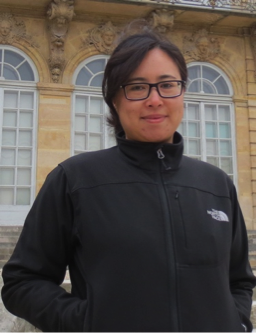
Date:
Location:
Title:
abstract
Engineering coherent systems is a central goal of quantum science and quantum information processing. Point defects in diamond known as color centers are a promising physical platform. As atom-like systems, they can exhibit excellent spin coherence and can be manipulated with light. As solid-state defects, they can be produced at high densities and incorporated into scalable devices. Diamond is a uniquely excellent host: it has a large band gap, can be synthesized with sub-ppb impurity concentrations, and can be isotopically purified to eliminate magnetic noise from nuclear spins. Specifically, the nitrogen vacancy (NV) center has been used to demonstrate basic building blocks of quantum networks and quantum computers, and has been demonstrated to be a highly sensitive, non-invasive magnetic probe capable of resolving the magnetic field of a single electron spin with nanometer spatial resolution. However, realizing the full potential of these systems requires the ability to both understand and manipulate diamond as a material. I will present two recent results that demonstrate how carefully tailoring the diamond host can open new opportunities in quantum science.
First, currently-known color centers either exhibit long spin coherence times or efficient, coherent optical transitions, but not both. We have developed new methods to control the diamond Fermi level in order to stabilize a new color center, the neutral charge state of the silicon vacancy (SiV) center. This center exhibits both the excellent optical properties of the negatively charged SiV center and the long spin coherence times of the NV center, making it a promising candidate for applications as a single atom quantum memory for long distance quantum networks.
Second, color centers placed close to the diamond surface can have strong interactions with molecules and materials external to the diamond, which makes them promising for nanoscale sensing and imaging. However, uncontrolled surface termination and contamination can degrade the color center properties and give rise to noise that obscures the signal of interest. I will describe our recent efforts to stabilize shallow NV centers within 5 nm of the surface using new surface processing and termination techniques. Specifically, we are able to demonstrate reversible and reproducible control over the top layer of atoms. These highly coherent, shallow NV centers will provide a platform for sensing and imaging down to the scale of single atoms.
[1] B. C. Rose, D. Huang, Z. Zhang, A.M. Tyryshkin, S. Sangtawesin, S. Srinivasan, L. Loudin, M. L. Markham, A. M. Edmonds, D. J. Twitchen, S. A. Lyon, and N. P. de Leon, “Observation of an environmentally insensitive solid state spin defect in diamond,” arXiv:1706.01555 [cond-mat.mtrl-sci] (2017)
[2] B. C. Rose, G. Thiering, A.M. Tyryshkin, A. M. Edmonds, M. L. Markham, A. Gali, S. A. Lyon, and N. P. de Leon, “Strongly Anisotropic Spin Relaxation in the Neutral Silicon Vacancy Center in Diamond,” arXiv:1710.03196 [quant-ph] (2017)
bio
Nathalie de Leon is an assistant professor in the Department of Electrical Engineering at Princeton University, where she started in 2016. Her group focuses on building quantum technologies with color centers in wide bandgap materials such as diamond. She received the Air Force Office for Scientific Research Young Investigator Award in 2016, the Sloan Research Fellowship in 2017, and the NSF CAREER Award in 2018. She was previously a postdoctoral fellow in the Harvard physics department, jointly supervised by Mikhail Lukin and Hongkun Park, working on cavity QED with diamond nitrogen vacancy (NV) centers integrated with diamond-based nanophotonics, with the goal of realizing scalable solid-state quantum networks. She received her Bachelor of Science degree in chemistry in 2004 from Stanford, where she worked under Richard Zare, and she earned her Ph.D. in chemical physics in 2011 from Harvard in the lab of Hongkun Park.



